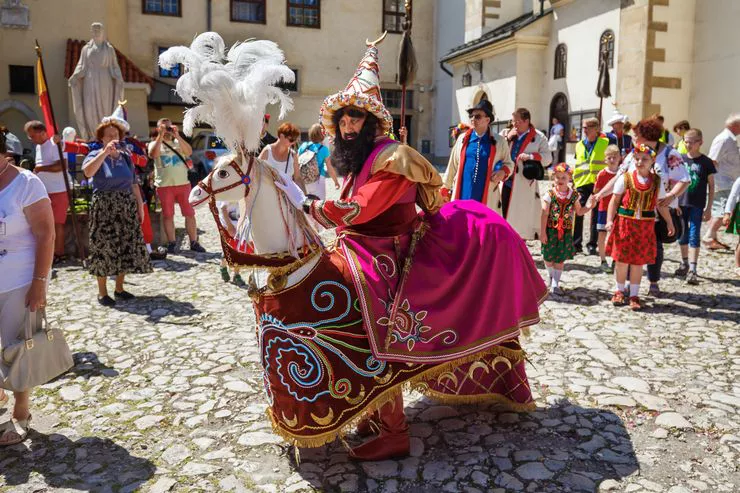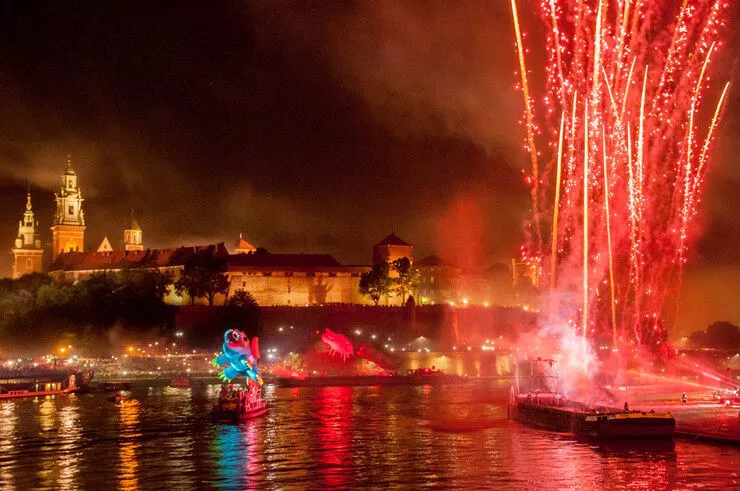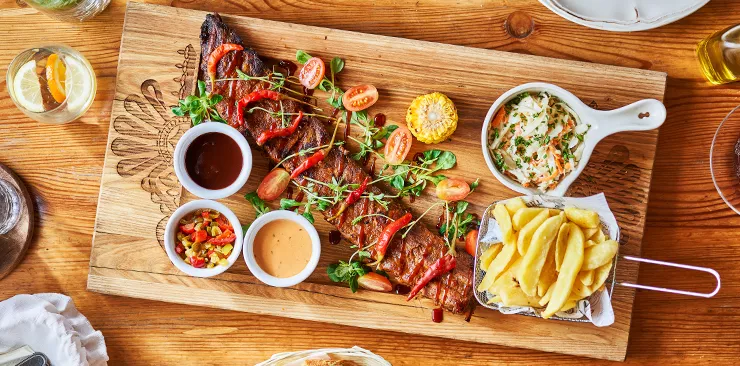





Customs as old as Wawel Hill.
If it is true that the more tales a culture has the richer it is, then Kraków has plenty reasons to boast. The local tales passed for countless generations speak of many unique events and moments.

One of the most unique starts with a Tatar khan caught unawares while sleeping in the bullrush by the Vistula. His small retinue were spotted and worsted by local raftsmen, who then donned their clothes and quietly entered the sleeping city at dawn. Obviously, they were taken for invaders. You can only imagine the commotion the sudden appearance of fierce fighters from the distant steppe must have caused! The raftsmen evidently enjoyed it and went on making awful racket. As soon as the yelling and panic-inspiring gang revealed their identity, the relieved burghers pardoned the practical jokesters, and vowed to set more watches and an annual parade in honour of the deed. Still held on the Corpus Christi octave, the parade continues from Zwierzyniec to the Town Hall Tower, with Lajkonik – the Kraków Pony wearing the khan’s robes and riding his hobby horse among the cavorting and music/noise made by his merry company all along the route.
However, the first Kraków legend you’ve heard of speaks about the Wawel Dragon. Where the lizard crept from, whether it devoured sheep or virgins, and what great services earned him a fire-breathing statue by the castle’s walls is another tale. Enough to note that the dragon is dearly remembered and commemorated even in Kraków’s fond name: smoczy gród – the dragon city. One of the ways we remember our firedrake is the annual Great Dragon Parade with tens of animated and inflated dragons roaming the streets and hovering above them.
A particular custom commemorates emotions of universal appeal: the uncertainty whether the ideal other half can be found, and who they will be. From times immemorial, young Slavic maidens went to the woods on the night preceding the longest day, picked the herbs indicated by lore, and wove wreaths of them. When the Sun came out, wading in the morning dew, they picked the flowers they guessed could be attractive for the boy of their dreams. Come St John’s Night (Midsummer), they stuck burning candles in their wreaths and set them on the waves. The boys waited round the river bend and would fish them out, every happy, even if soaked, wreath-catcher immediately darting to see whom fate chose for his wife. Today Wianki – the Casting of the Wreaths has become part of the international Fête de la Musique celebration and is a popular festival of music, dance, and – fireworks being banned – laser lights on the banks of the Vistula by Wawel Hill close to the shortest night of the year.
Have you heard of a painted village? It lies in north-eastern Małopolska, 90 minutes away from Kraków by car, and is known as Malowane Zalipie: the painted Zalipie. Standing proudly in its centre are a cluster of cottages painted long ago in floral motifs. Believe it or not, but you can see the characteristic colourful bouquets also on wells and a dog’s kennel. Soon after Corpus Christi, that is usually in late May and early autumn, competitions for women and men decorating both the outer walls and the interiors are organised.
The clothing of Lajkonik – the Kraków Pony is historical, as it was designed by Stanisław Wyspiański in 1904 And yes, Lajkonik has cavorted in the same garb at least since then. In turn, his retainers, whose number includes mlaskoty – Lajkonik’s music (or racket) making companions, skip and hop in apparel designed by Krystyna Zachwatowicz, the wife of Oskar-winning director Andrzej Wajda. Make sure you meet the merry procession and earn the right to be hit with Lajkonik’s mace: it promises wealth, mirth, and general positive vibes for the whole following year. And once Lajkonik’s charm has fizzled with time, why not return to Kraków and Małopolska the following year? You’re more than welcome!








